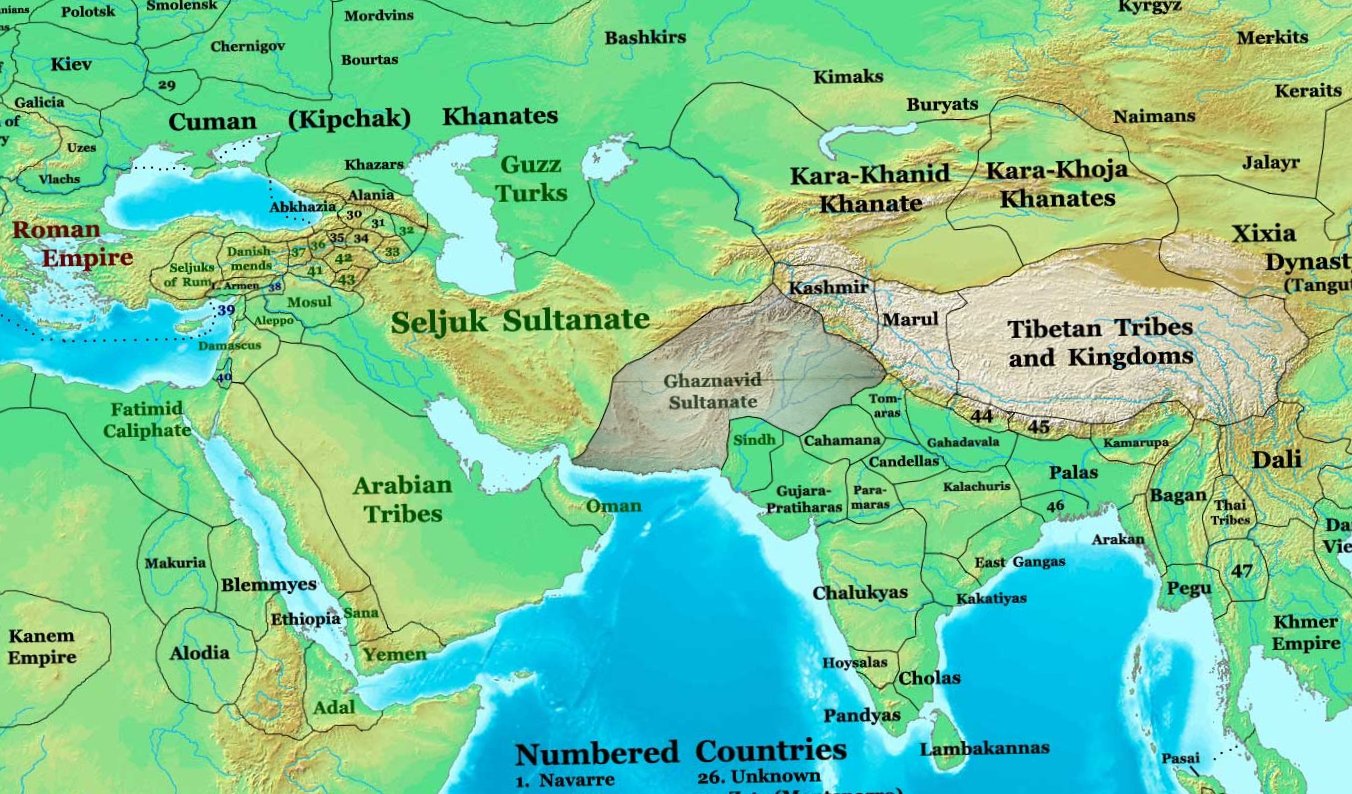In the 11th century, Mahmud Ghazanis invasion had a wide-ranging impact on India. Only the Hindu Shahi and Chandelas posed major resistance .
Impacts / Significance of Mahmud Ghazanis invasion

Ghazni looted immense money, causing a significant economic blow for the region. The demolition of temples not only led to the loss of architectural marvels, but also emphasized the cultural impact of the invasions.
Ghazni’s military success highlighted India’s military deficiencies, as the strong Indian armies struggled to repel Ghaznavid assaults. This established Islam across the Indian subcontinent and paved the way for future Islamic victories.
Following the invasion, Sufi saints arrived, leading to increased encounters between Hindus and Muslims. The region experienced enormous cultural and social changes as a result of these contacts, which were both positive and problematic.
During Ghazni’s reign, academics such as Al Beruni, Utabi, Farabi, Asjadi Farrukhi, and Firdausi created works on Indian and Persian history, culture, and society.
Ghazni’s expeditions in India did not build a durable Islamic kingdom, but they did deplete the region’s military might and acquire enormous money. Satish Chandra rightly described Ghazni as a torchbearer for succeeding Turkish invasions, recognizing the lasting significance of his military exploits on the subcontinent.
Role of Al Beruni/ Abu Raihan
Al Beruni, also known as Abu Raihan, was a prominent Muslim Indologist. He accompanied Mahmud of Ghazni to India, bringing his expertise in history, scholarship, intellectualism, and astronomy. Al Beruni studied Sanskrit, religious and philosophical works, and wrote Kitab Ul Hind/Tahakik-e-Hind, a collection of 22 volumes about India.
Al Beruni translated Euclid’s Greek work into Sanskrit and helped spread Aryabhata’s Magnum Opus (Aryabhatiya) to the Western world. As an inter-civilizational bridge between India and the world community, he shared insights on social realities, caste structures, religious and philosophical traditions, literary achievements, scientific advances, and political landscapes in India.
Al Beruni criticized India’s history, highlighting the lack of a clear narrative. He criticized Mahmud of Ghazni’s damaging actions and provided insight into the cultural and political context of the time.
Limitations of his approach
Biasness and superiority towards his own culture and not appreciating India’s Historical
Tradition and ignoring India’s History and traditions.
He ignored Non-Sanskrit texts as a source to study India’s traditions.
Evolution of the Ghaznavid Empire
- Alptigin, a Turkish slave of Samanid ruler Amir-Abu-Bakr Lawik, established the Ghaznivid (Yamini) dynasty in 963. The first powerful king was Sultan Ala Ud Din (Jahan Soz, World Burner).
- He conquered the kingdom of Jabul, with its capital Ghazni. He was succeeded by his son-in-law, Subuktigin, a capable and ambitious king.
- He captured all areas between Lamghan and Peshawar from Hindushahi ruler Jayapala.
- Subuktigin was succeeded by his son Ismail, who was overthrown by Mahmud in 998. He became known throughout history as Mahmud Ghazni.
- Muhammad of Ghori was the Sultan of the Ghurid Empire from 1173 to 1202, and the sole ruler from 1202 to 1206.
- He aimed to govern over modern-day Afghanistan, Bangladesh, Iran, Northern India, Pakistan, Tajikistan, and Turkmenistan after being dissatisfied with Ghaznavi.
- He aimed to establish a permanent empire in India.
Delhi Sultanate
The Delhi Sultanate was an Islamic empire based in Delhi that stretched over large parts
of the Indian subcontinent (1206–1526).
Five dynasties ruled over the Delhi Sultanate sequentially
- The Mamluk/Slave/Ilbari dynasty (1206–1290),
- The Khalji dynasty (1290–1320),
- The Tughlaq dynasty (1320–1414),
- The Sayyid dynasty (1414–1451),
- The Lodi dynasty (1451–1526).
Pre & Mains : Buy History NCERT 11th class by R.S.Sharma for UPSC
History Optional : Buy A History of Ancient And Early Medieval India : From the Stone Age to the 12th Century By Upinder Singh
Feature Image Credit and License :- Wikimedia Commons license
Inline Image (Mahmud Ghazani’s Sculpture) Credit and License :- Wikimedia Commons license
